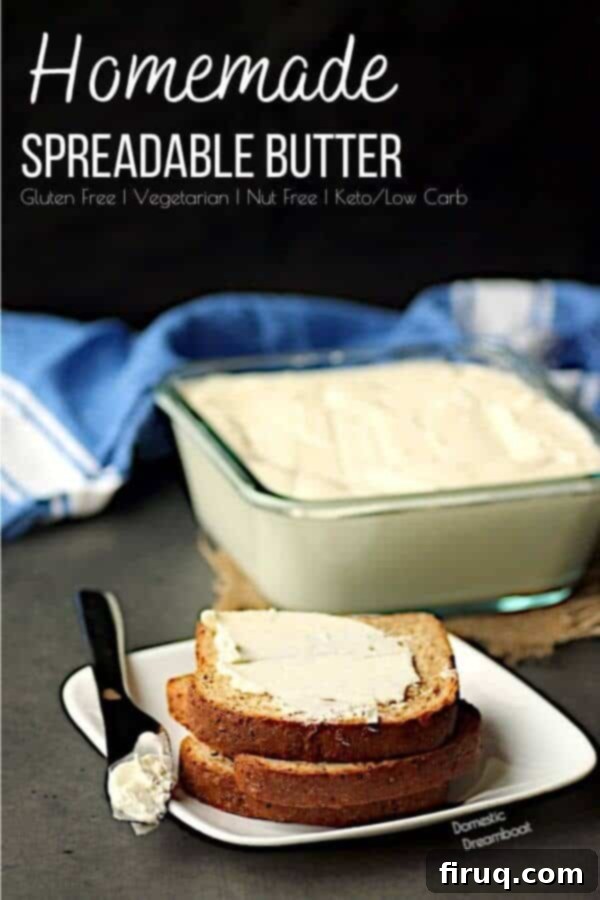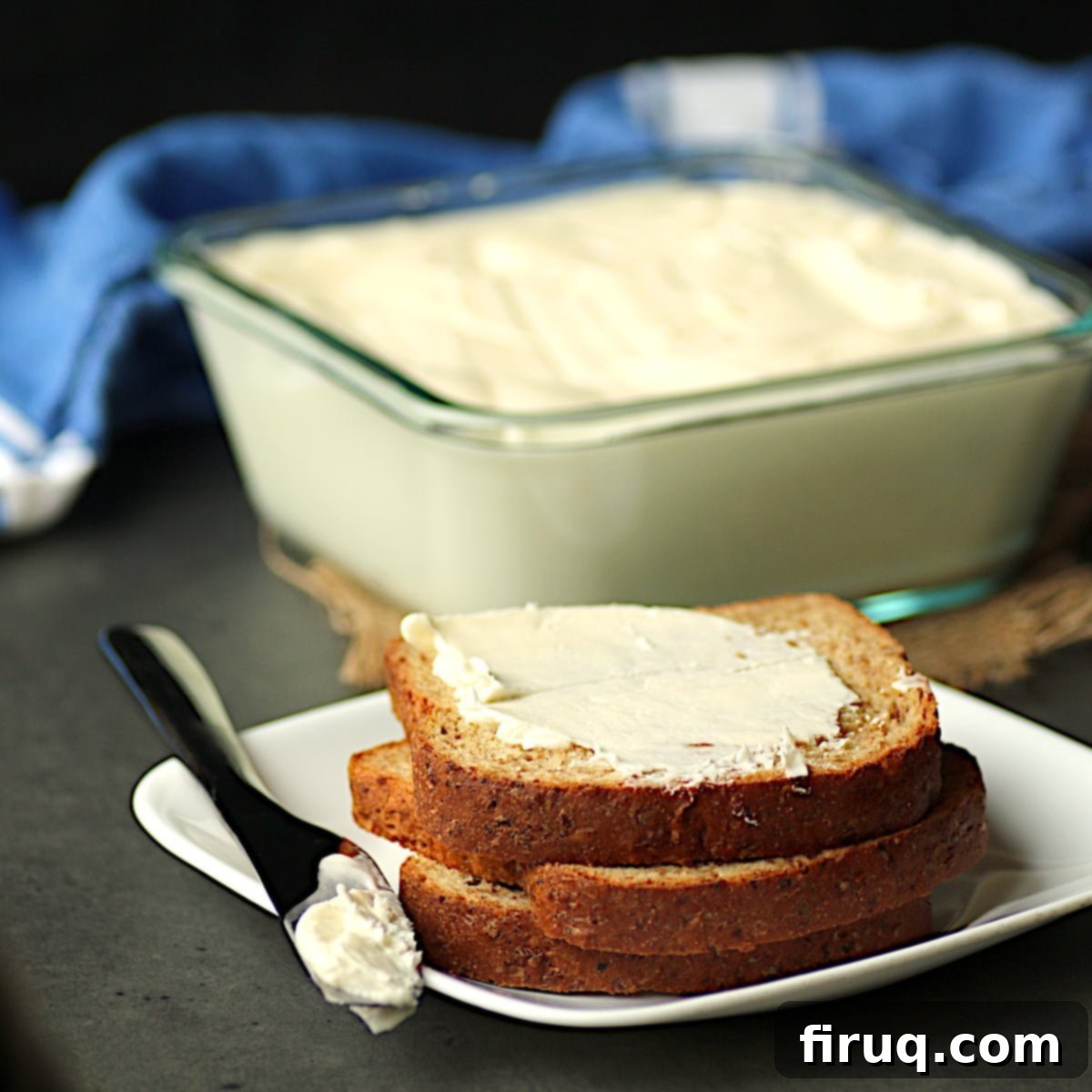Homemade Spreadable Butter: The Easy, Delicious, and Healthier Alternative
Imagine a world where your butter effortlessly glides onto your toast straight from the fridge. No more tearing bread, no more waiting for softening, just pure, creamy goodness. This isn’t a dream; it’s the magic of homemade spreadable butter! This simple, two-ingredient recipe transforms ordinary butter into a convenient, delicious, and even healthier spread that will revolutionize your breakfast and snack routines.
For about a year now, I’ve been a dedicated advocate for making my own spreadable butter at home. My journey began after I stumbled upon a store-bought version that was surprisingly good. It was a revelation – a blend of butter and olive oil that delivered the rich, authentic flavor of real butter with the ultimate spreadability. That experience quickly made me realize that while margarine has its place, nothing truly compares to the taste of butter, especially when it’s this easy to use.
Before discovering this simple trick, my kitchen routine involved a clear division: margarine for spreading on toast and sandwiches, and traditional butter reserved for baking and cooking. I want to be clear that I have no qualms with the nutritional advancements of modern margarine. It’s shed its outdated “bad rap” now that harmful trans fats have been largely eliminated. In fact, many margarines boast lower saturated fat content than butter and offer superior convenience due to their natural spreadability straight from the refrigerator. Yet, despite these advantages, my palate consistently gravitated towards the unparalleled flavor of real butter.
This is where homemade spreadable butter truly shines, offering the absolute best of both worlds. It combines the irresistible taste of butter with the easy-to-spread texture of margarine, creating a perfect fusion for any culinary application. It’s an incredibly simple upgrade that delivers immense satisfaction, transforming everyday meals and snacks into something truly special.
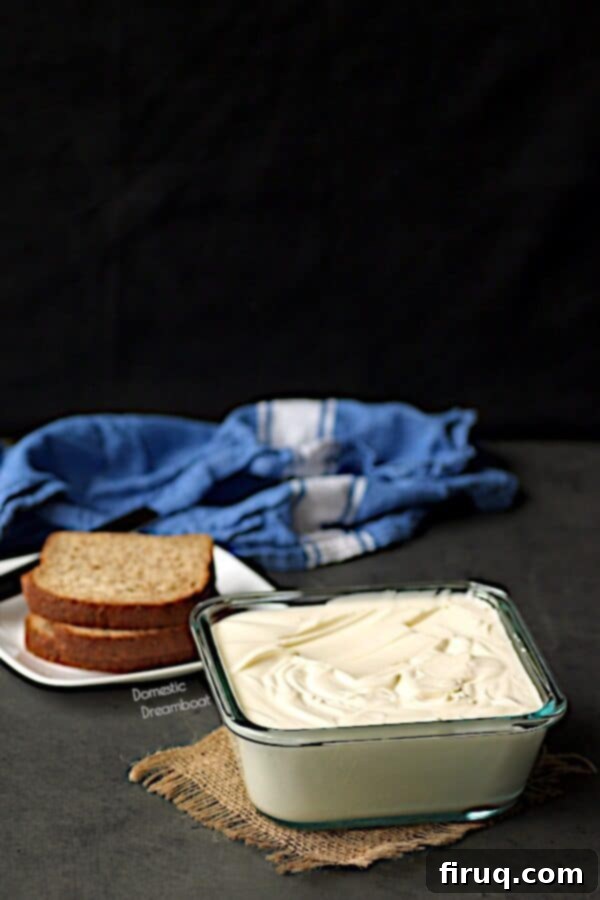
Why Choose Homemade Spreadable Butter? Benefits and Advantages
Beyond the sheer convenience, there are numerous compelling reasons to embrace homemade spreadable butter. It’s a smart choice for your wallet, your taste buds, and even your health. Let’s dive into the key benefits that make this DIY condiment a kitchen essential.
What are the benefits of homemade spreadable butter?
Creating your own spreadable butter offers a multitude of advantages that enhance both convenience and quality:
- It can be cheaper than buying it from the store: Pre-made spreadable butter, especially those premium brands that combine butter and oil, often come with a higher price tag. By purchasing butter and a neutral oil separately, you can often save a significant amount, making it a budget-friendly option for everyday use.
- It tastes better than margarine: For many, the rich, authentic, and complex flavor of real butter is simply unmatched by margarine. Homemade spreadable butter allows you to enjoy that genuine butter taste while still getting the easy spreadability you desire.
- It has less saturated (unhealthy) fat, and more heart-healthy fats than butter: By blending butter with a neutral-flavored oil, you effectively reduce the overall saturated fat content of the spread. This increases the proportion of healthier monounsaturated and polyunsaturated fats, making it a more heart-conscious choice without sacrificing flavor.
- You can control how much salt is added to it: Store-bought spreads can vary widely in their sodium content. When you make your own, you have complete control. Use unsalted butter and add a pinch of salt to taste, or stick with salted butter if you prefer a bolder flavor, giving you the power to tailor it perfectly to your dietary needs and preferences.
- It’s more convenient than using butter because it’s easy to spread straight out of the fridge: This is arguably the biggest selling point! No more waiting for butter to soften, no more tearing up delicate toast or baked goods. This spread is consistently soft and ready to use, whether it’s for a quick breakfast or a last-minute sandwich.
- You can keep it in the fridge all the time, so it lasts longer than keeping butter at room temperature, which can go rancid quickly: While some people keep butter on the counter for spreadability, this can lead to quicker spoilage, especially in warmer climates. Homemade spreadable butter remains soft in the fridge, extending its freshness and ensuring it’s always ready when you are.
How to Make Homemade Spreadable Butter: A Simple Guide
The process of making this versatile butter spread is surprisingly quick and straightforward, requiring minimal effort and just a few basic ingredients. You’ll wonder why you didn’t start making it sooner!
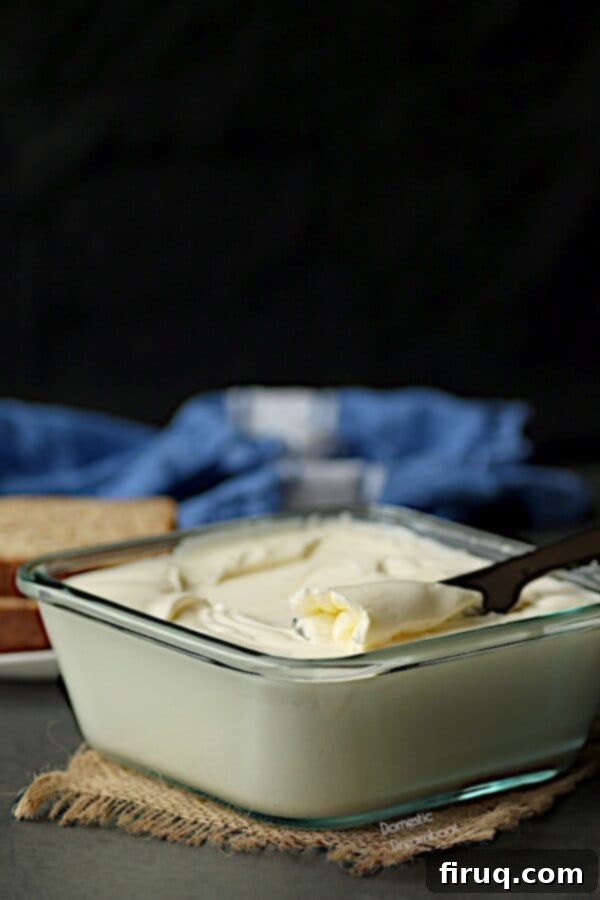
How do you make spreadable butter?
It’s incredibly easy, requiring only two or three simple ingredients!
Essential Ingredients:
- Butter (salted or unsalted): The foundation of your spread. Ensure it’s softened to room temperature for optimal blending.
- Canola or other neutral flavored oil: This is key to achieving the spreadable consistency and for modifying the fat profile. Canola is a popular choice due to its mild flavor and wide availability.
- Salt (optional, if using unsalted butter and you desire a salted spread): This allows you to customize the flavor. If you start with salted butter, you likely won’t need to add more.
Simple Step-by-Step Process:
The method is as simple as combining these ingredients. You’ll need either a stand mixer or a food processor to achieve a perfectly smooth consistency. Begin by whipping the softened butter until it’s light and fluffy. Then, slowly drizzle in your chosen oil while the mixer or food processor is running, allowing it to fully incorporate. Continue mixing until the entire blend is smooth and uniform. Initially, it will appear quite liquid, but don’t worry—it will solidify beautifully once chilled in the refrigerator, ready to be spread with ease!
Creative Ways to Use Your Homemade Spreadable Butter
Once you’ve mastered the art of making this delightful spread, you’ll find countless applications for it in your kitchen. Its versatility goes far beyond just morning toast.
How do you use spreadable butter?
The primary and most satisfying use for your homemade spreadable butter is as a luxurious spread. It’s perfect for:
- Toast and bread: The ultimate breakfast companion, melting perfectly without tearing.
- Bagels and English muffins: Spreads into all the nooks and crannies with ease.
- Sandwiches: Creates a smooth, flavorful base for any filling.
- Waffles and pancakes: A delightful topping that enhances flavor.
- Muffins, scones, and other baked goods: Spreads like a dream, even on delicate textures.
Beyond spreading, it can also be used as a 1:1 replacement for butter or margarine in many recipes. Think sautéing vegetables, making sauces, or greasing baking pans. However, it’s crucial to understand its limitations. Do not attempt to use it in pastry recipes that specifically call for chilled, solid butter, such as pie dough, biscuits, or scones. The added oil will change the texture and fat content, preventing these recipes from achieving their desired flaky or crumbly results.
Choosing the Right Oil for Your Spreadable Butter
The choice of oil plays a significant role in both the texture and flavor of your homemade spreadable butter. Selecting the right type ensures you achieve the perfect balance of spreadability and authentic butter taste.
Can I use a different type of oil to make spreadable butter?
Absolutely! While I typically use canola oil for its affordability, widespread availability, and neutral flavor profile, you have several excellent options depending on your preferences:
Neutral Oils for Classic Butter Flavor:
To ensure your spreadable butter tastes as much like pure butter as possible, I highly recommend using a neutral-flavored oil. These oils will not overpower the delicate taste of the butter. Great choices include:
- Canola Oil: My personal go-to for its neutrality and economic value.
- Vegetable Oil: A common household staple, also very neutral.
- Grapeseed Oil: Light-bodied with a clean finish.
- Avocado Oil: Mild, buttery flavor (can subtly enhance butter) and high smoke point.
- Corn Oil: Another neutral option.
- Safflower Oil: Very mild and often used in spreads.
Exploring Olive Oil:
You can certainly choose to use olive oil, particularly light or extra-virgin olive oil. However, be mindful that olive oil, especially extra-virgin, possesses a distinct fruity or peppery flavor. This can contribute a stronger, more complex taste to your butter, which some people enjoy, but it will deviate from a classic butter flavor profile. If you’re a fan of olive oil’s characteristics, this could be a delicious variation!
Why Avoid Coconut Oil:
I strongly advise against using coconut oil in this recipe. While coconut oil is popular for many uses, it remains solid at room temperature and firm when chilled. Incorporating it into your butter mixture will counteract the goal of spreadability, resulting in a hard, less pliable spread, defeating the purpose of this recipe. Stick to liquid oils for the best results.
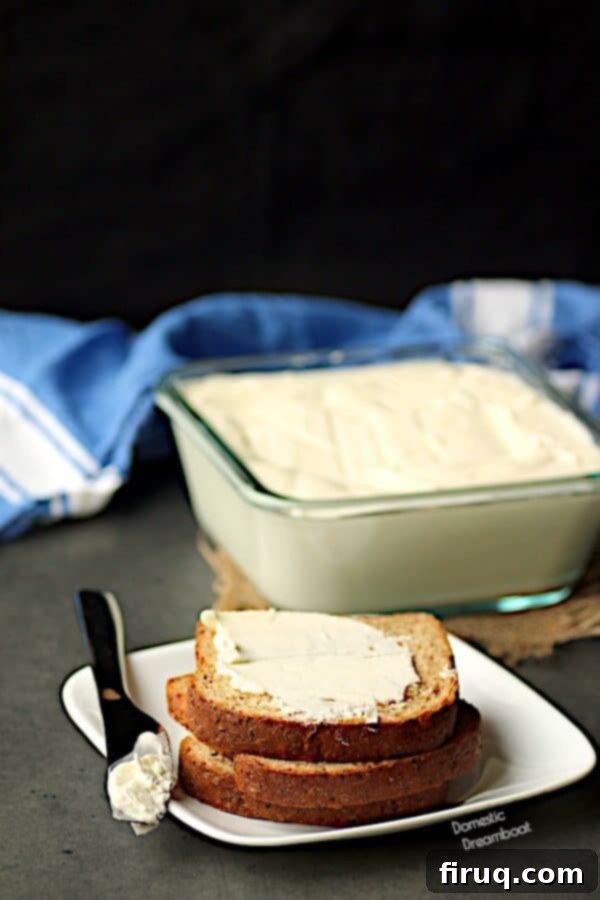
Want more homemade condiment recipes?
Spreadable Butter Nutrition Notes: A Deeper Dive
Understanding the nutritional profile of homemade spreadable butter can help you make informed dietary choices. It’s often viewed as a more health-conscious alternative to traditional butter, particularly for those focusing on heart health.
Compared to regular butter, homemade spreadable butter typically features a more favorable fat composition. By incorporating neutral oils, you inherently reduce the proportion of saturated fats, naturally occurring trans fats, and cholesterol. In their place, you increase the intake of unsaturated fats, including monounsaturated and polyunsaturated fats, which are widely recognized for their heart-healthy benefits. These beneficial fats can help lower bad cholesterol levels and support overall cardiovascular wellness.
It’s important to note that while the type of fat changes, the total fat content and calorie count per serving remain roughly comparable to that of regular butter. Therefore, moderation is still key. However, for individuals aiming to reduce saturated fat intake, follow a Mediterranean diet, or simply want the rich, authentic flavor of butter with added health benefits, making your own spreadable butter is an excellent and delicious choice.
Homemade Spreadable Butter
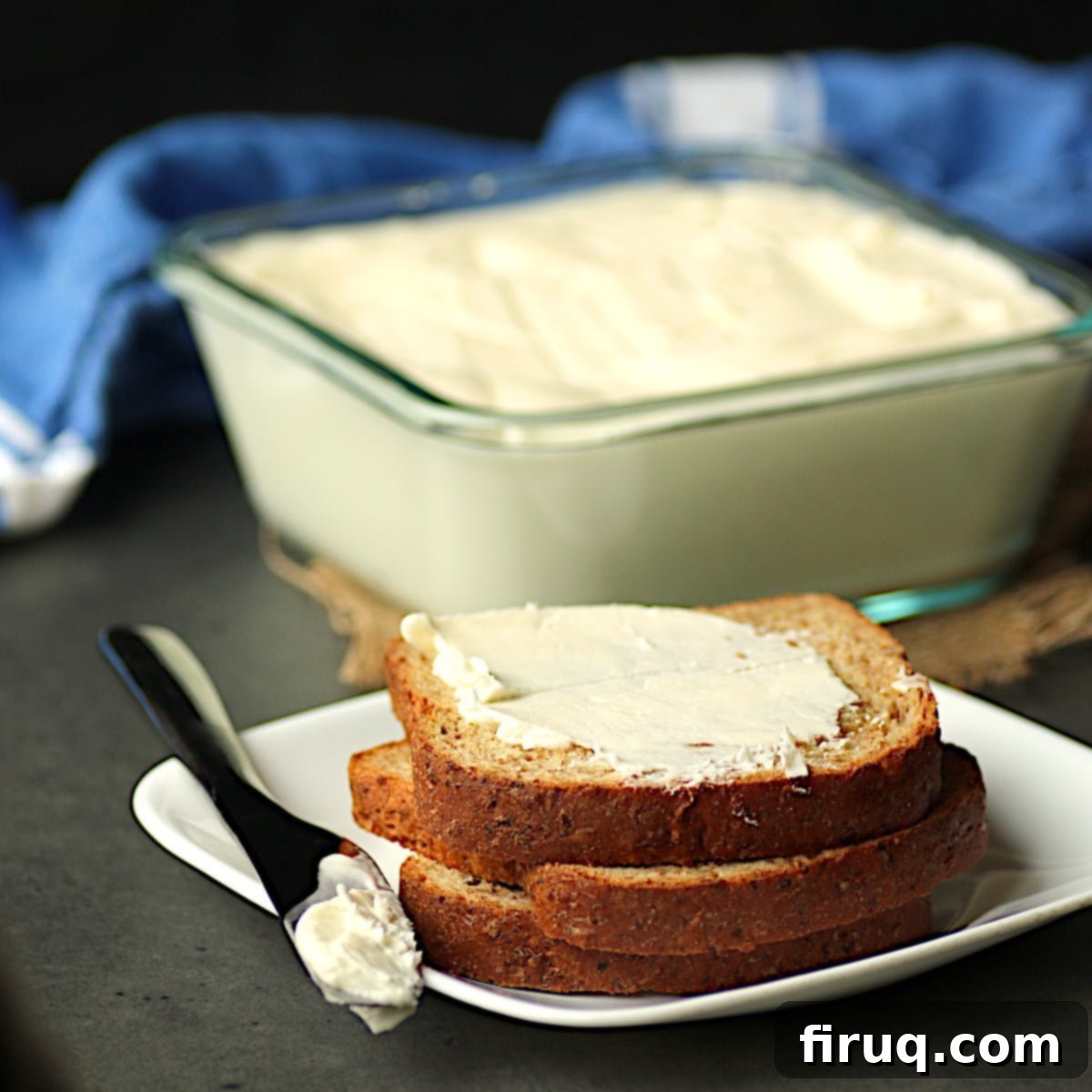
Print Recipe
Pin Recipe
Ingredients
- 1 pound salted butter, softened at room temperature (see note)
- 1 1/2 cups neutral flavored oil (eg. canola or vegetable oil)
Instructions
-
Place the softened butter in a food processor or bowl of a stand mixer. Mix until the butter is very soft and at a whipped consistency.
-
Add the salt (if using) and slowly drizzle in the oil with the food processor running. Once the oil is added, scrape down the sides of the bowl as needed and mix again until the mixture is a smooth consistency (note: at this point the spreadable butter will be very runny. Once it it chilled it will solidify to a spreadable consistency).
-
Pour into large airtight container and chill completely. Store in the fridge for up to 1 month (if you think it will take you longer to use this amount of spreadable butter, pour into two smaller containers and store one in the freezer). Use as needed replace butter/margarine as a spread, or in recipes.
Nutrition
Notes
Tried this recipe?
Please Consider Leaving a Review!
Embracing homemade spreadable butter is more than just a recipe; it’s a lifestyle upgrade. It combines the luxurious taste of real butter with unparalleled convenience and offers a healthier fat profile, all while being budget-friendly and customizable. Once you try it, you’ll find it indispensable in your kitchen, making every slice of toast, every sandwich, and every dollop of spread a pure delight. So, gather your two simple ingredients and experience the joy of effortlessly spreadable butter!
